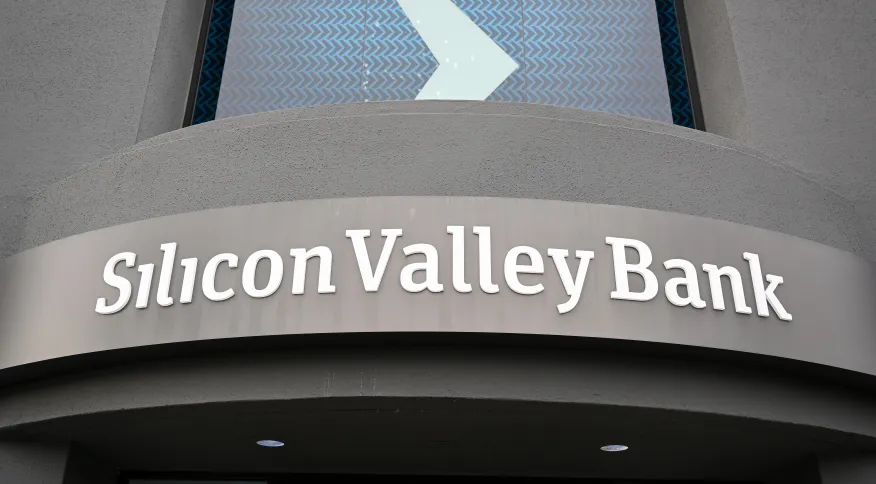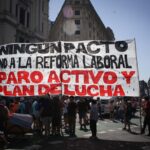
By Antonio Martins
No myth is forever. Belief in the solidity of the finances that flourished under neoliberalism became more fragile this Sunday (3/12), when the three main US monetary authorities hurriedly met, among themselves and with President Biden, to try to quell a fire raging in the banking system. Three banks had failed in the previous days – one of them, the Silicon Valley Bank (SVB), specialized in financing startups and considered by some to be the “blood of the technology sector”. There were signs that depositors were rushing to withdraw their deposits at other institutions, fearing losing them. There was a risk of a “systemic crisis”, catastrophic for the economy.
The emergency mobilization involved the powerful chairman of the Fed (the central bank), Jerome Powell, the secretary of the Treasury (sort of minister of finance), Janet Yellen, and the president of the bank deposit guarantee institute (FDIC), Martin Guenberg. The announced measures are unorthodox. The Fed will honor, with public funds, all deposits in failed banks, favoring in particular the richest customers, whose balances over $250,000 are not protected by law. It is not known how much this bailout will cost, but potentially it could reach hundreds of billions of dollars. In addition, a cr was openededitorial (Bank Term Financing Program, or BTFP) to safeguard, also with State money and under favorable conditions, other banking institutions at risk. It is too early to know whether the actions, advocated by Biden in a Monday morning address, will succeed. By early afternoon, the signs were worrying, with new banks at risk. As in all crises, the facts help shed light on realities that have been hidden for a long time.

Behind the crash, the interest
Basic interest rates, determined by central banks, have been rising across the West since early 2022. The movement affects economies and societies in different ways. In Brazil, peripheral and regressed, an absurd index (13.75%, or 8.5% per year above inflation) paralyzes investments and bleeds the State. It is the largest in the world and twice as large as the countries that come in second place.
In the US, real rates remain negative (4% a year, against an inflation of 6.4%). But the increase continues and the president of the Fed promised to accelerate it, in testimony to the Senate on 7/3. It was this upward movement, in a scenario marked by the generalized financialization of the economy, that led SBV to collapse and threatens other banks.
A text from the magazine Economist helps to understand. Headquartered in Santa Clara, California, SBV specializes in having startups technologies and health services. The affluent deposits it received from this sector made its “market” value more than triple between the beginning of 2020 and the end of 2021. quadrupled, reaching US$ 189 billion at the same time. It looked healthy enough to be included in the magazine. Forbes, a few weeks ago, on the list of “best banks” in North America.
Interest brought it down in two ways. The SBV bought US Treasuries in droves when rates were close to zero. The first significant losses came when the sharp rise in interest rates devalued these older papers, which “micaked” (since it is possible to invest in new bonds, with much higher yields). The situation has worsened with the crisis in the US technology sector, which for months has caused company failures and mass layoffs.
But the most shocking fact – and indicator of possible contagion – was the speed of the final collapse of the SVB. On 3/8, the bank announced it was seeking $2.5 billion (just over 1% of its assets) to cover a deficit on its balance sheet. The news was enough to trigger a devastating run on its deposits, particularly from high-profile customers. Depositors with more than $250,000, unprotected by legal safeguards, transferred their accounts almost instantly to larger institutions. In two days, SVB shares lost 88% of their value. On Friday, 3/10, the monetary authorities closed the bank.
On Sunday, they did the same with Signature Bank, in New York, also exposed to wealthy depositors fleeing risk. Already this Monday morning (13/3), despite the measures of the banking authorities and Biden’s speech, a similar movement seemed to threaten the First Republic, San Francisco and other regional banks. In his morning address, Biden pledged to “do whatever is necessary” to protect the banking system. But at what cost?
The search for alternatives to rentism expands
The financial crisis opened in 2008-2010 is the starting point of the political phase we are experiencing. It was then that the 0.1% class demanded and obtained from Western governments the salvation of its assets and interests; that the global inequality gap has opened; that the attacks on the Welfare State have increased; that the hollowing out of democracy became clear.
Fifteen years later, would societies be willing to experience a similar episode?
The answers began to emerge on Sunday itself (8/12). In the US, posts that demanded: “No taxpayer bailouts for the rich” went viral on social media. [“No taxpayer bailout for rich clients”]. Senator Bernie Sanders, a former presidential candidate, said: “This is not the time to save the SVB. We cannot continue downhill with socialism for the rich and raw individualism for everyone else.” Senator Elisabeth Warren, known for her struggle to reform the financial system, recalled in an article for the New York Times that bailouts remain for banks and speculators – while there is no way out in sight for millions of students sunk in bank debt.
Perhaps two voices should be listened to even more carefully. One is that of veteran economist Michael Hudson. In a denunciation text on the role of the financial system under neoliberal capitalism, published today, he recalls that (contrary to what Biden promised) the majorities always pay to save the banks. The money spent on them does not even enter the State Budget – neither in the US nor in Brazil. simply is issued out of nowhere and becomes part of the public debt. Neither the Legislative nor the Executive decide or are heard. The financial aristocracy has more efficient strings to bring the state to its knees.
Hudson also recalls that this dynamic of deregulation of financial markets and aid by the State, whenever a crisis occurs, is creating increasingly toxic forms of speculation. One of them is the explosion of “derivative instruments”, pure bets, through which large financial “players” try to multiply their capital, gaining on the future values of food, minerals, inflation, currencies, stock market indices, the number of bankruptcies… This casino has grown so much, warns Hudson (it would have exceeded a quadrillion dollars, or forty times the GDP of the USA) that minimal unforeseen events can generate colossal losses and ignite the spark of a systemic banking crisis.
The other voice is that of Ellen Brown, the great advocate of public banking. The interest rate hike that the entire West is now chasing, she argues, is a foolish tool against inflation. It inflicts enormous suffering on societies and fails to address the root of the problems. There are alternatives – adopted not only in China, but also in other Asian countries, such as South Korea and New Zealand. It consists of employing the capacity of the State, of create currency out of thin air not to fuel speculation, but for large projects to reinforce public services and renew infrastructure.
It works, shows Ellen Brown in the article. It remains to be seen whether there will be political will – in the US and, soon, in Brazil.
Originally Posted by Other Words
Join our WhatsApp group, clicking on this link
Join our Telegram channel, click this link
Source: https://www.diariodocentrodomundo.com.br/fogo-no-sistema-bancario-por-antonio-martins/

